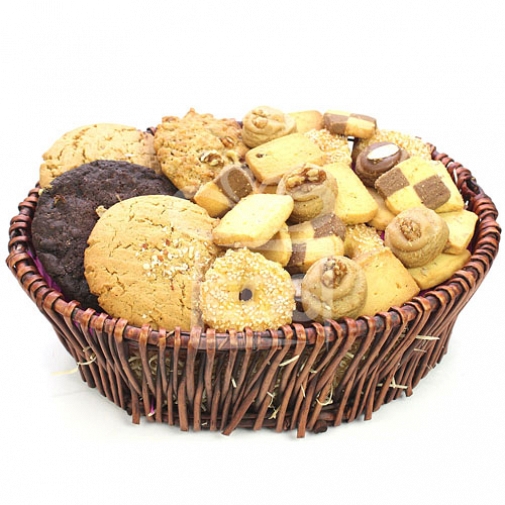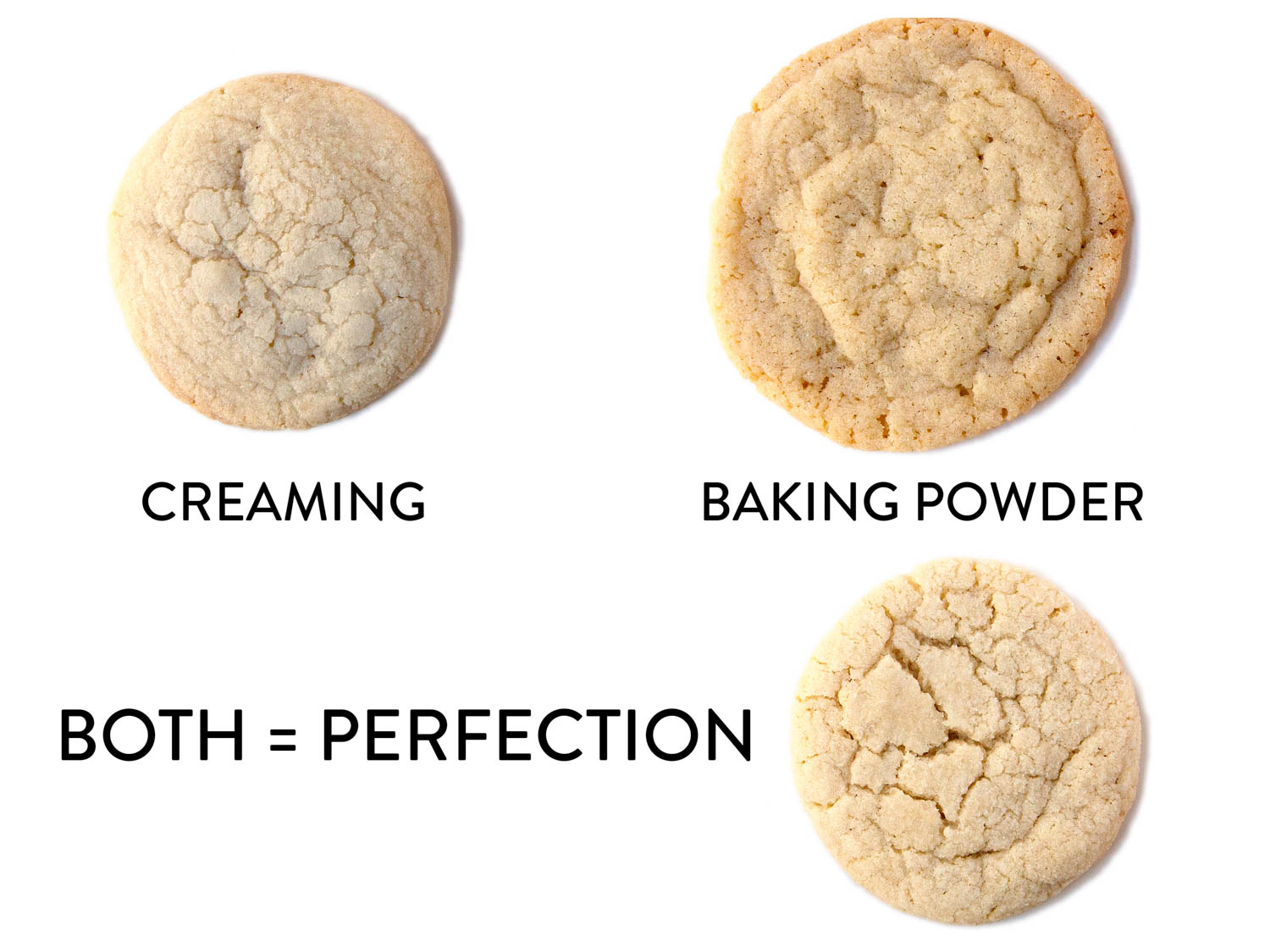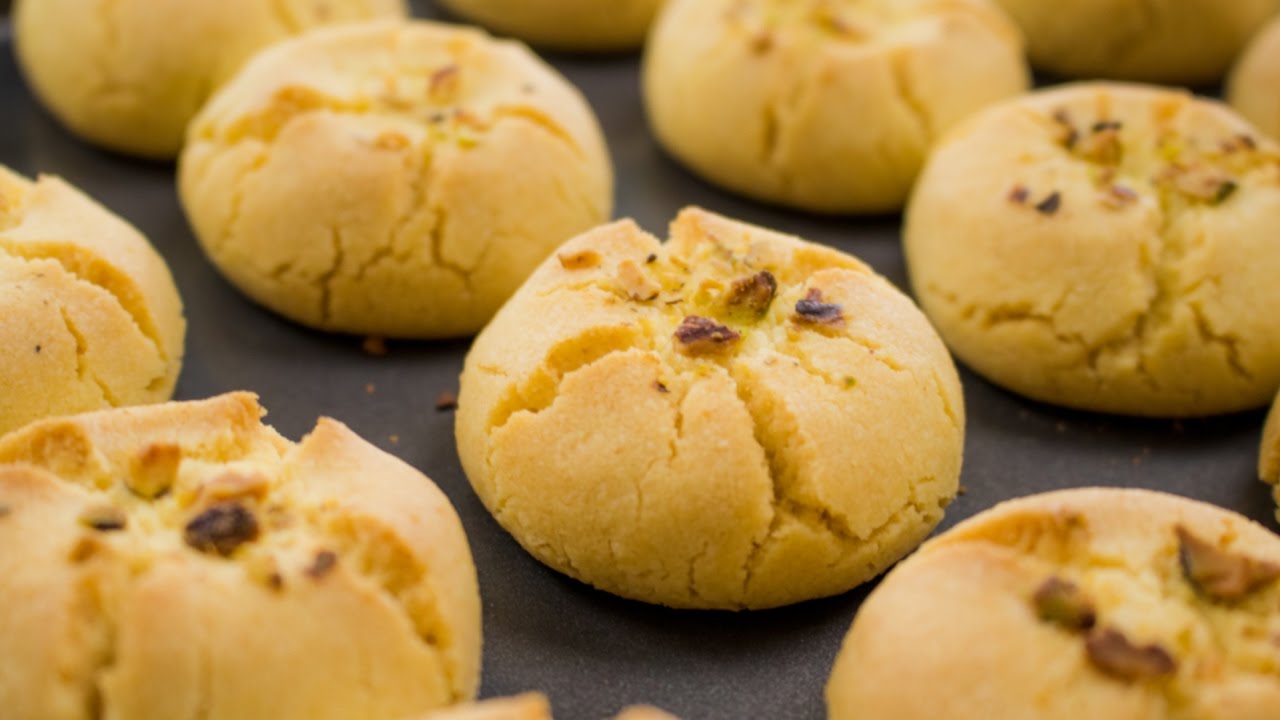Cookies and Biscuits: Differences, Recipes, and Techniques
What is a cookies?
Cookie is an American English name, which was derived from the Dutch word ‘koekje’ which means ’little cake’. Cookies are loaded with flavours and take more time to bake, because of the thick batter and dense ingredients that range between nuts, oats, chocolate chips and resins. They are generally moist and chewy in texture.

What is a biscuit?
Biscuit is a British English name, which is derived from the Middle French word ‘bescuit’ which is derived from the Latin words bis (twice) and coquere (to cook, cooked), which means ‘twice-cooked’. The idea of making biscuits goes back to the Romans. However biscuits as we know them were developed in the Middle Ages. In the 19th century, with the Industrial Revolution the mass production of cakes, biscuits and jelly began.
- With a light texture and a crusty exterior, biscuits are generally made of butter, flour, and sugar or salt. They are thinner in dimension as compared to cookies. It is a sweet or savory dry flat cake with a high calorie content (420-510 / 100 gm) The raw materials used for biscuit manufacture is flour, sweeteners, shortening, milk, leavening agents and other miscellaneous products.
Reason for twice baking-
Double baking is a way to dry out baked goods to make them keep longer because the more water that was removed from the biscuits, the less likely they were to get moldy on long voyages, as long as they were tightly sealed. This makes biscuit more crispy.
- In the days before refrigeration, food preservation was an important element of cooking, and the double baking method made it easier to store food.

Some basic difference between cookies & Biscuits–
- Cookies require soft dough, while biscuits require hard dough.
- Cookies are little heavier than biscuits, whereas, biscuits are fluffier than cookies.
- Cookies is made from soft dough so that it is easier to piped out or put into the mould while biscuits are usually prepared from tight dough so that it can be rolled into thin sheet for desired shape.
- Cookies contain more sugar than biscuits.
- “Cookies call for detailing in terms of toppings and frosting, whereas biscuits are relativity plain and require no elaborate decoration.
- There are so many delicious things that can be added to a cookie. These inclusions are usually added to the batter before a cookie is baked, adding to its dense texture. Cookies are rarely decorated on the outside after they are baked.
- Whereas biscuits are often iced or have a centre of cream or jam filling between two biscuits like Bourbon and Custard creams.
- In India, the most popular forms of cookie decoration include glazing, frosting, royal icing and dry toppings. The dry toppings are added before the cookies are placed in the oven, while other forms of decoration are done after the baking procedure.”
A brief detail about cookies & its making procedure
COOKIES
Most cookies are made from the same basic ingredients. The dry ingredients consist of maida, baking powder, baking soda & salt. The sweetness comes from granulated and/or brown sugar. The fat is either softened butter, margarine, shortening, or occasionally oil. Eggs and vanilla extract are also used. For different flavored cookies, you can add any or all of these: chocolate, cocoa, nuts, raisins, oatmeal, spices or extracts.

Ingredient used in Cooking-
Flour is a binding agent that provides structure and determines the density of the cookie. The type of flour affects the overall texture of the cookie too. All-purpose flour is often used because of its versatility, bread flour adds more chew, and cake flours produce a softer texture, paler color, and less spread. Unbleached flour provides more structure than bleached versions. Whole wheat flour adds heartier and a nuttier flavor, but creates a denser texture with less chew and should be limited to about 30% of the total flour in the recipe. Gluten-free flours are sometimes substituted for wheat flour.
- Fat:- Fat include butter, margarine, or shortening. Vegetable oils, including olive oil or walnut oil, may be used for a specific flavor profile. Fats control texture so adding more will make the cookie chewy, and less fat will make it crunchy.
- Eggs- Eggs are used as a leavening and binding agent, add moisture, and control the spread and rise of a cookie. Egg whites produce a crisp texture, while egg yolks result in chewier textures.
- Sweeteners- provide taste and help to tenderize the dough. Because sugar melts while it is baking, it increases the spread of the cookie. Coarse sugars spread more than confectioners’ sugar which contain cornstarch. White sugar produces a crisper cookie, while brown sugar produces a moist and chewier cookie. Molasses, honey, and maple syrup are other sweeteners that are used in cookie doughs.
- Leavening agents including baking powder and baking soda are used to produce a lighter, cake-like texture, but are often used to encourage browning during the baking process.
- Salt is a flavor enhancer and also strengthens the protein in the dough making it chewier.
- Other additional ingredients can also be added to give special flavour in cookies.

Basic Ingredient ration in making cookies-
Cookie ratios vary depending on the desired texture. A basic cookie dough follows a 1-2-3 proportion of sugar, fat, and flour. This is a dense cookie, mildly sweet, that is prepared as an icebox dough. For a chewy texture use equal parts fat, sugar, and flour, and for a crisp cookie add more sugar.



COOKIES MAKING METHODS & TECHNIQUE-
Cookie mixing methods are similar to cake mixing methods. Major difference is that less liquid is incorporated, therefore less gluten. The methods of mixing are:
- One stage blending method: – The one-stage blending method combines all ingredients and gently mixes them at a low speed to a uniform batter. Here the baker has less control over the mixing. This method is not used very much because the baker has less control over the mixing than with other methods. However, when you are making a recipe where over-mixing isn’t going to be a problem, like with chewy cookies, this method can be used.
Procedure of Making cookies by One stage blending method –
- Measure all of your ingredients.
- Let them all come to room temperature.
- Put them in a mixer all at once and mix them until they are uniformly blended.
- Shape the cookies & bake it at 175°C for 10-15 minutes in the oven
- Creaming method of making cookies:-
- The Creaming Method is the most commonly used method of making cookies. It is what we use when we make various types of cookies like- chocolate chip cookies, sugar cookies, oatmeal raisin cookies etc.
The basic procedure:-
- Measure all ingredients & let them come to room temperature
- Put the fat, sugar into the mixing bowl and cream them on low speed (*note that you can also blend your spices and salt into your dry ingredients)
- For lighter cookies, cream until light and fluffy, this incorporates more air for leavening, For denser cookies, cream to a smooth paste, but do not cream until light
- Add the eggs and any liquid such as vanilla essence or any other liquid essence etc and blend at low speed.
- Add dry ingredients such as flour & baking powder in the above creaming mixture & mix just until combined. Don’t mix it for longer time as it will increase the gluten formation in the cookies.
- Pipe out the mixture or give shape to the cookies and bake at desired temperature i.e bake it at 175°C for 10-15 minutes in the oven.
Sponge method of making cookies:
This procedure can vary considerably, depending on the ingredients you’re using. The batches should be kept small because the batter is super delicate, in other words, don’t double recipes that require this method because your cookies won’t come out. This method is generally used for meringue cookies.
- Measure your ingredients & let them come to room temperature (for greater volume warm your eggs a little)
- Whip your eggs and sugar together until the desired consistency
*soft peaks if you’re only whipping whites, thick and light if you’re whipping yolks or whole eggs. - Fold in the rest of the ingredients according to the recipe
- Do not over-mix or deflate your eggs
- Shape the cookies & bake it at 175°C for 10-15 minutes in the oven

Baking Technique of Cookies
Higher fat cookie doughs spread more and need about 2”/5 cm spacing, while cookies with higher flour spread minimally. The ideal temperature for baking cookies is 350°F/175°C on the middle rack of the oven. Cookies baked at lower temperatures are thinner with more spread and a crisper texture, while baking at higher temperatures produces a thicker and softer cookie.
- Please Note-Chilling cookie dough before baking is very much necessary as it helps to firm the fats and reduces spread. Cookie doughs that are baked fresh tend to have a doughy texture and less caramelization. Aging doughs from 12-36 hours hydrates the flour, breaks down carbohydrates into simple sugars, resulting in a sweeter tasting cookie with better caramelization and texture.
Storing Cookies
Soft cookies such as bar cookies, are stored in a container with a tight lid. If they tend to dry out, add a slice of apple to the container.
- Crisp cookies should be stored in a container with a loose lid, like a cookie jar. If there is a lot of humidity in your area, add a piece of bread to the container. The bread helps to absorb the moisture.
Different Cookie Types
Bar cookies:-are prepared by putting the dough in a rectangular pan. They are baked and then cut into squares. Most drop cookie recipes can be converted to this type of cookie. These are the easiest cookies to make because several batches are baked at once
Drop cookies:– are the easiest individual cookies to make. Balls of dough are dropped from a spoon onto a cookie sheet. It doesn’t get any simpler than that!
Molded Cookies feature dough that is formed by the hands into shapes such as wreaths, crescents, canes, or balls. Balls are sometimes flattened with the bottom of a glass.
Pressed cookies :-are made by pressing the dough through a cookie press or pastry tube to form different shapes. These are also known as “spritz cookies.”
Ice box cookies:– are prepared by shaping the dough into long rolls and then refrigerating them. Once cold, the dough can be sliced and baked. This is a great prepare-ahead-of-time dough because it can also be frozen.
Rolled cookies :-take a little more preparation. With a rolling pin, the chilled dough is rolled out. The dough is cut into shapes by using a knife, pastry wheel or cookie cutter.
Details of cookies faults
Lack of spread:-
- Too fine granulation of sugar
- Adding sugar at one time
- Excessive mixing
- Too hot oven temperature
- Too much of acidity in the dough
Excess of spread:-
- Excessive sugar
- Too soft a batter consistency
- Excessive pan grease
- Too low an oven temperature
- Excessive or improper type of shortening
Tough cookies:
- Insufficient shortening
- Flour too strong
- Over handling
Sticking to pans:-
- Too soft a dough
- Excessive egg content
- Unclean pans
Black spots and harsh crumbs:-
Excessive ammonia:-Sometimes we want some cookies to be crisp, others to be soft, some to hold their shape and others to spread. In order to produce characteristics we want, and to correct faults, it is useful to know what causes these basic traits.
Crispness: Cookies are crisp if they are low in moisture.
- Low proportion of liquid in the mixture, so stiff dough
- High sugar and fat content
- Baking long enough to reduce moisture
- Small sizes or thin shapes
- Proper storage
Softness: This texture is the opposite of crispness
- High proportion of liquid
- Low sugar and fat
- Use of honey and molasses
- short baking times
- Large size or thick shapes.
- Proper storage
Chewiness: Moisture is necessary for chewiness
- High sugar and liquid content
- High proportion of egg
- Strong flour
What is NanKhatai?
Nankhatais are shortbread biscuits popular in India and Pakistan. The word Nankhatai is derived from Persian word Naan meaning bread and Khatai from an Afghan word meaning Biscuit. Nankhatai is believed to have originated in Surat in the 16th century, the time when Dutch and Indians were the important spice traders. Nankhatai is a popular sweet cookie cum snack. Nankhatai are made with all-purpose flour, sugar and ghee (clarified butter) or butter is spiced with cardamom and nutmeg.
Basic Ingredients in Making Nankhatai-
- Wheat Flour
- Gram Flour or Besan
- Butter or ghee
- Powder sugar
- Cardamom & Nutmeg
- Pista nuts
- Paking powder

Melting Moment cookies-Melting Moments (Butter Cookies) – are unleavened cookies consisting of butter, flour, and sugar. They are wonderfully buttery and melt-in-your-mouth. it is very Deliciously soft, buttery, melt-in-your-mouth cookies that are infused with vanilla.
Basic Ingredient used in making melting moments cookies-
- All purpose flour or Maida
- Milk
- Egg
- Unsalted butter
- Powdered sugar
- Vanilla extracts
- Corn flakes for coating (Optional)

Content Reference:-
The above content has been compiled after referring various culinary books, Research Papers, Research articles, Food magazines, news papers, top culinary websites, Govt websites, personal interaction with renowned chefs from various hotel brands like The Ashok Group of hotel, ITC, Oberai, Leela, Park Hotels & various IHM Faculties, Nutritionists etc. & many more. The picture which i have used has been taken from the open source website .Some of the important website referred for the above content are:-
